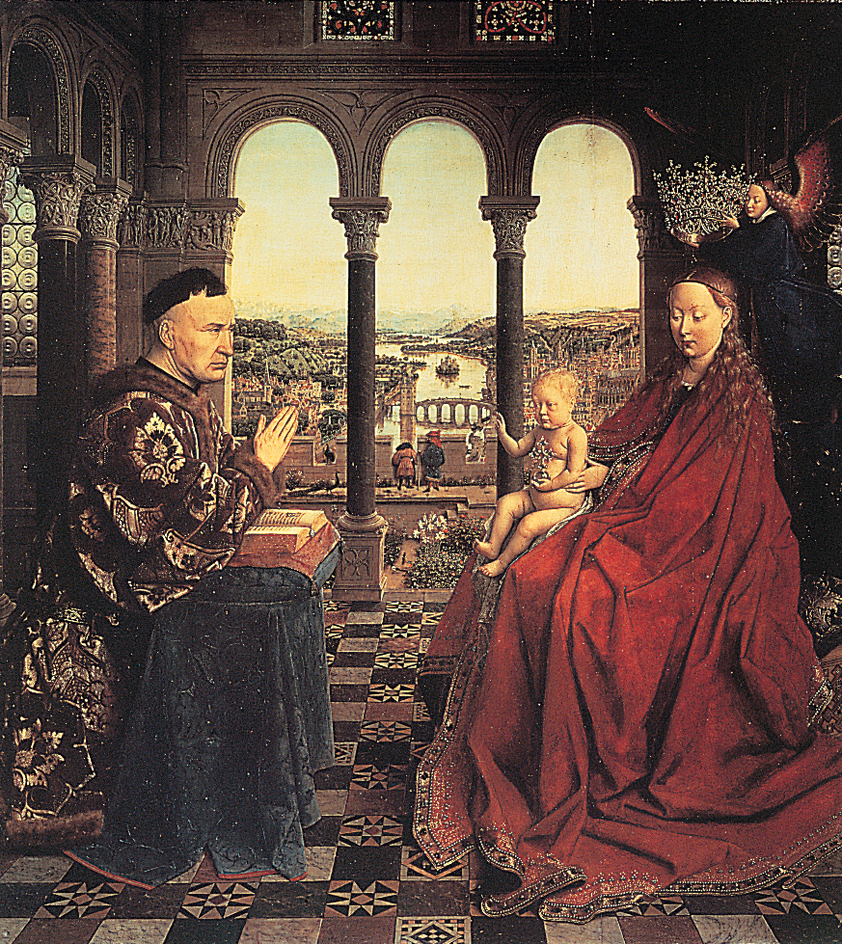Van Eyck, Jan, << van EYEK, yahn >> (1380?-1441), was one of the greatest and most influential Flemish painters of altarpieces and portraits of the 1400’s. His work typically portrays the subjects in minute realistic detail and bright colors. Although van Eyck did not invent oil painting, as has been previously thought, he achieved stunning effects with oil paint. He applied layer after layer of the paint to achieve the effect of shimmering jewels or rich textures. The Madonna and Child with Chancellor Rolin (about 1436) is an example of the artist’s precise style.

Many of van Eyck’s paintings include what has been called disguised symbolism. The realistic objects in the pictures often have a deeper meaning related to the religious nature of the image. Examples of hidden symbolism appear in his painting Portrait of Giovanni Arnolfini and His Wife (also known as The Arnolfini Wedding). Scholars generally believe that the painting depicts an Italian merchant and his bride. They have removed their shoes to indicate they stand on holy ground as they exchange wedding vows. The single burning candle in the chandelier symbolizes both the presence of Jesus Christ and the “marriage candle” that was part of the ceremony. The dog may symbolize fidelity in marriage. Van Eyck and a second individual served as the two required witnesses in such a wedding. They are reflected in the small mirror on the back wall.
According to tradition, van Eyck was born in the province of Limburg, in the border region between the Netherlands and what is now Belgium. He worked for wealthy and sometimes powerful patrons. Van Eyck collaborated with Hubert van Eyck, probably his brother, on the large multipanel painting called the Ghent Altarpiece (1432). Jan van Eyck died on June 22 or 23, 1441.
